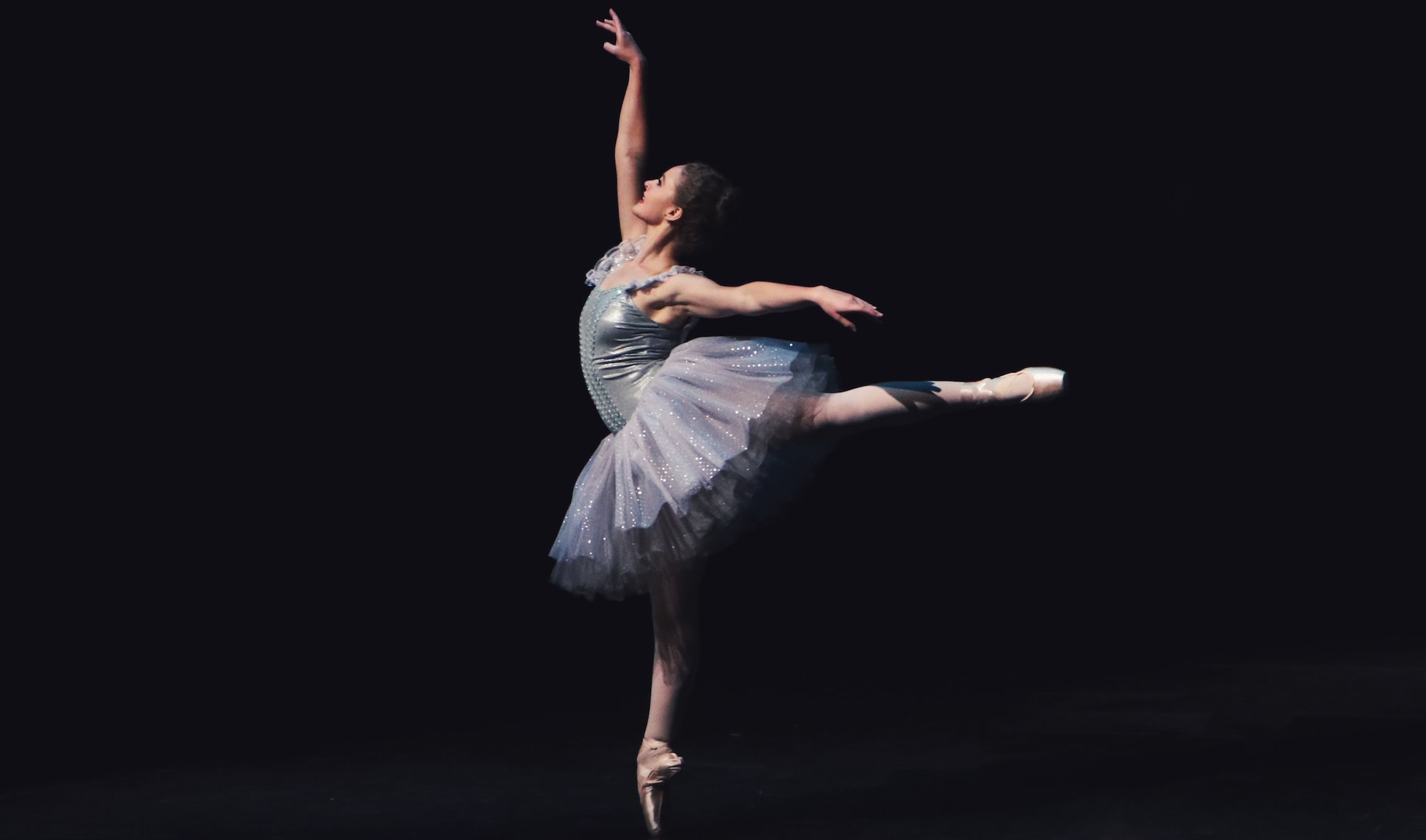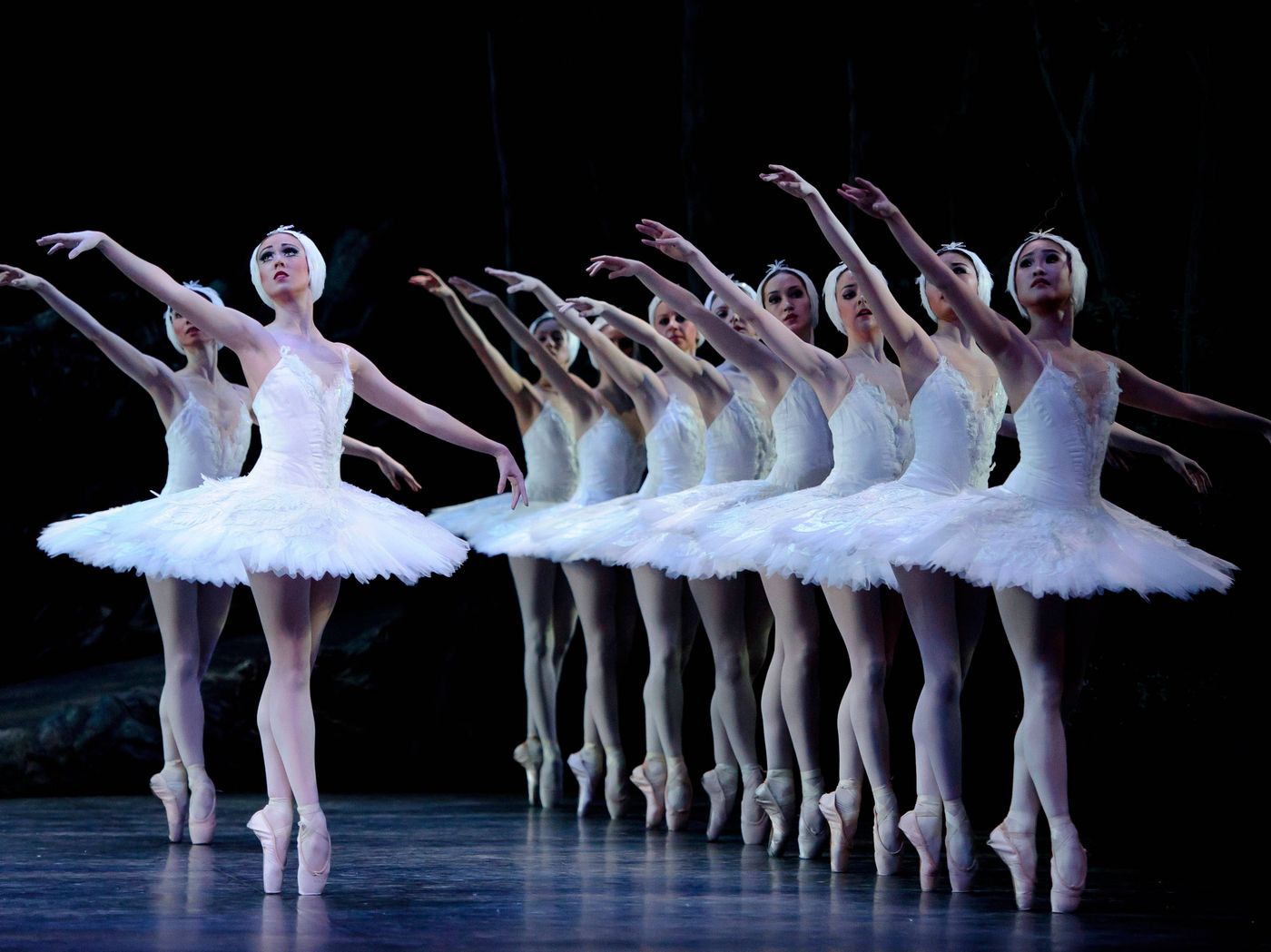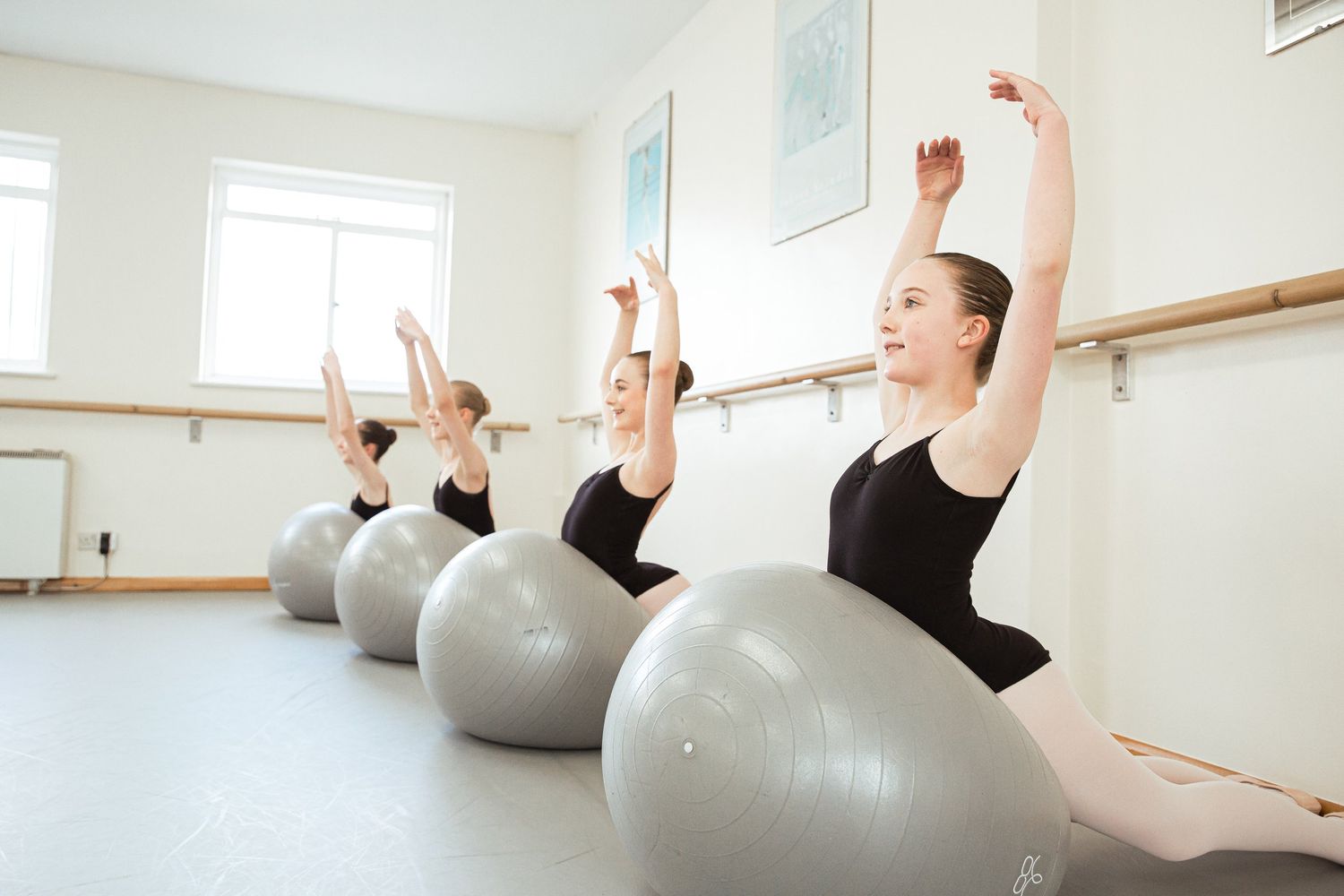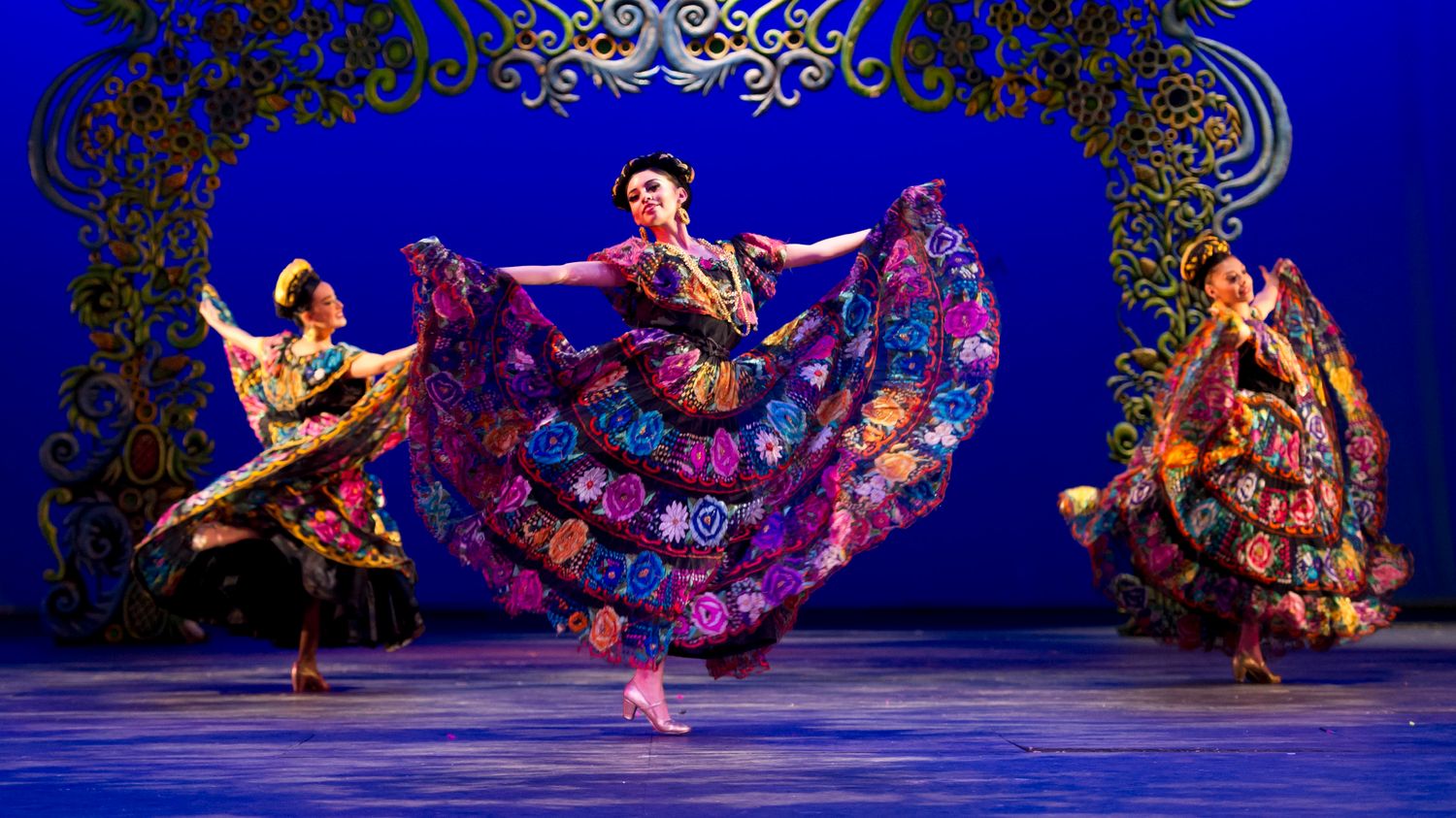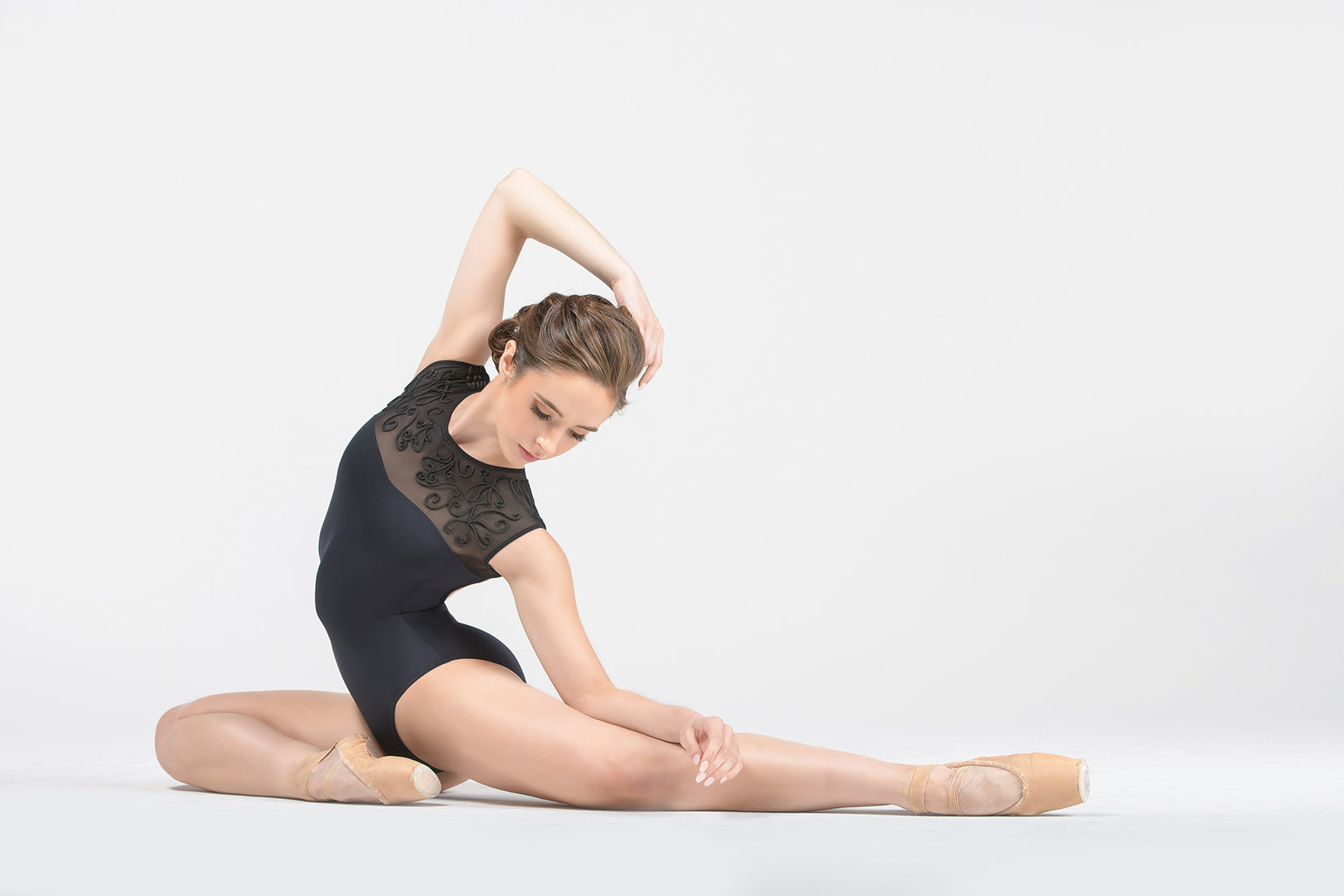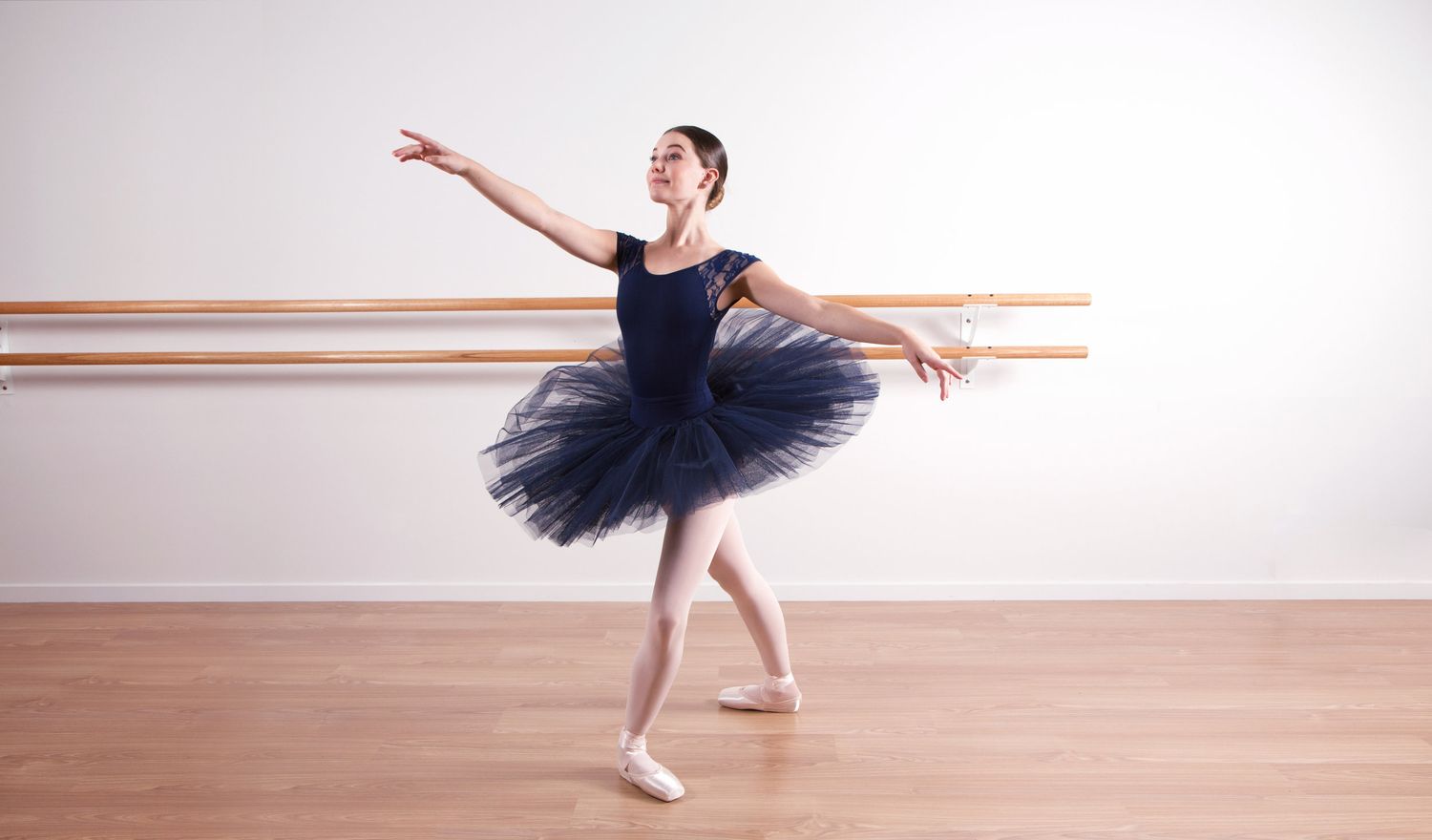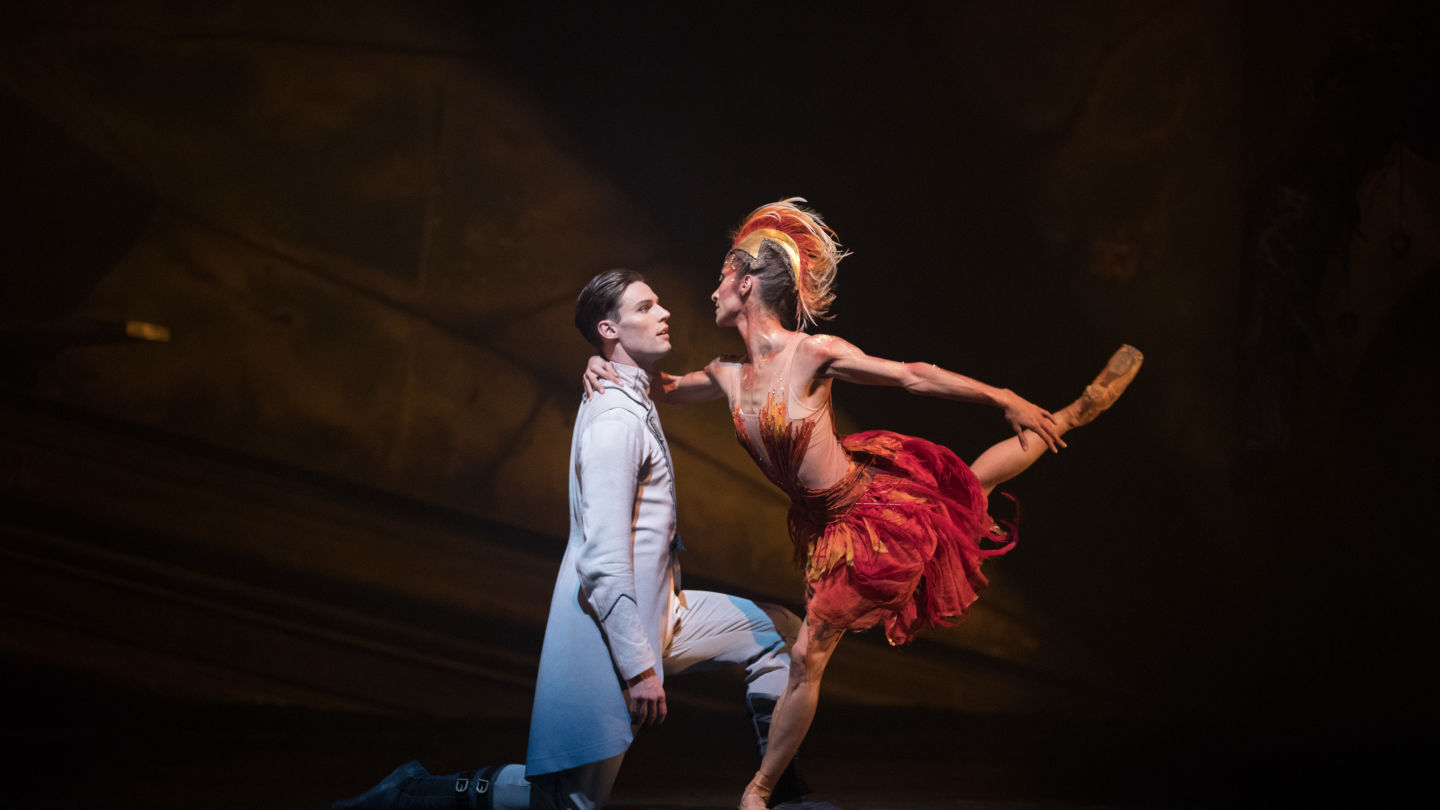Home>Events & Info>Ballet>What Is A Rond De Jambe In Ballet
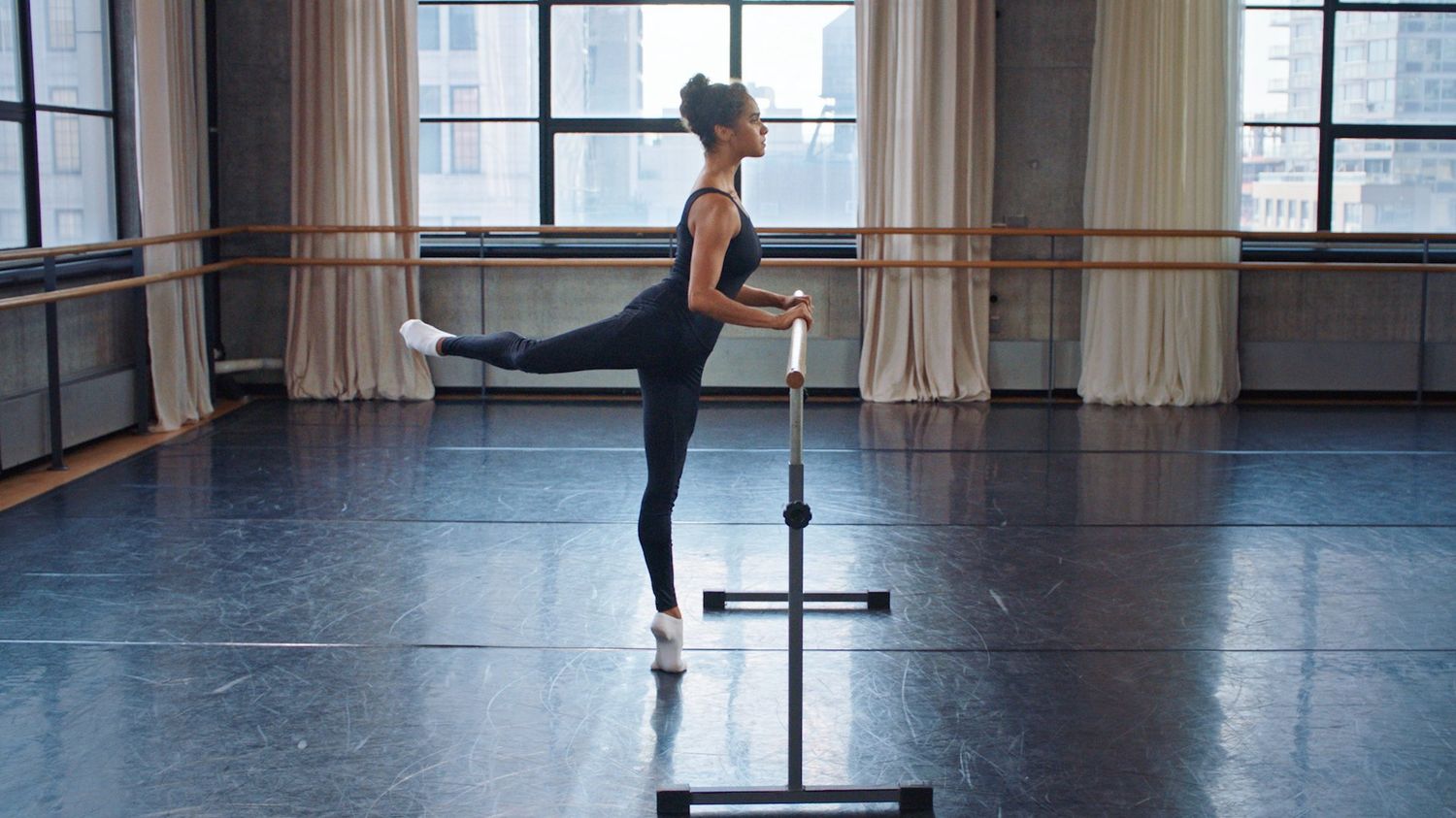

Ballet
What Is A Rond De Jambe In Ballet
Modified: January 22, 2024
Learn all about the ballet technique of rond de jambe, a graceful movement that involves circular leg movements. Discover how this fundamental ballet step is executed and its importance in dance.
(Many of the links in this article redirect to a specific reviewed product. Your purchase of these products through affiliate links helps to generate commission for AudioLover.com, at no extra cost. Learn more)
Table of Contents
Introduction
Ballet is a graceful and elegant form of dance that has captivated audiences for centuries. It requires not only incredible strength and flexibility, but also a deep understanding of technique and terminology. One fundamental movement in ballet that every dancer must master is the Rond De Jambe.
The term “Rond De Jambe” is derived from French, translating to “round of the leg.” It is a movement that involves circular motions of the leg, creating a beautiful arc through space. Rond De Jambe can be performed en dehors (outward) or en dedans (inward) and can be executed on the ground or in the air.
This versatile movement is incorporated into countless ballet combinations, from simple barre exercises to intricate adagio and allegro sequences. It is not only aesthetically pleasing to watch but also plays a vital role in developing strength, flexibility, and body alignment.
In this article, we will delve into the intricacies of the Rond De Jambe, exploring its various variations, the proper execution technique, its importance in ballet, common mistakes to avoid, and tips for mastering this essential movement.
Definition of a Rond De Jambe
A Rond De Jambe is a ballet movement that involves the leg making a circular or semi-circular motion. It is typically performed while standing on one leg, with the other leg extended and moving in an arc. The circular motion can be executed either outward (en dehors) or inward (en dedans), depending on the direction of the circle.
Rond De Jambe can be performed on the ground or in the air. When performed on the ground, it is often part of barre exercises and warm-up routines. In the air, it can be done with the leg lifted to various heights, enhancing the challenge and beauty of the movement.
There are three main types of Rond De Jambe:
- Rond De Jambe à Terre: This refers to a Rond De Jambe performed on the ground. The working leg moves in a circular motion, while the supporting leg maintains stability. It is commonly used in barre exercises to warm up the legs and hips.
- Rond De Jambe en l’air: In this variation, the working leg is lifted off the ground, either low or high, while maintaining the circular motion. It challenges the dancer’s balance and requires control and coordination.
- Grand Rond De Jambe en l’air: This is a more advanced version of Rond De Jambe en l’air, where the working leg is lifted to a higher position, often at or above 90 degrees. It demands greater flexibility and strength.
Regardless of the variation, Rond De Jambe is characterized by the fluid circular motion of the leg, creating a sense of grace and elegance. It is an integral part of a ballet dancer’s repertoire and serves as a foundation for more complex movements and combinations.
Execution of a Rond De Jambe
The execution of a Rond De Jambe requires careful attention to technique and proper body alignment. To perform this movement correctly, follow these steps:
- Starting Position: Begin in a proper ballet stance, with the feet turned out and the heels together. Engage your core and maintain a tall posture throughout the movement.
- Shift the Weight: Shift your body weight onto one leg, which will be the supporting leg throughout the Rond De Jambe.
- Extend the Working Leg: Keeping the supporting leg stable, extend the working leg to the front, side, or back, depending on the direction of the Rond De Jambe and the desired variation.
- Create the Circular Motion: Initiate the circular motion by tracing a smooth arc with the working leg. The foot should stay pointed and the movement should flow naturally without any jerky or abrupt motions.
- Control the Speed and Range: Control the speed and range of the circular motion according to your skill level and the specific variation of Rond De Jambe being performed. Remember to maintain control and precision throughout the movement.
- Complete the Circle: Bring the working leg back to the starting position, either closing it to a cou-de-pied position (foot at the ankle) or returning it to the floor. Keep your body aligned and maintain your balance.
- Repeat on the Other Side: Shift your body weight onto the opposite leg and repeat the same steps on the other side.
Proper technique is crucial for executing a Rond De Jambe correctly and safely. It is important to engage the correct muscles, maintain stability in the supporting leg, and maintain alignment from head to toe. Regular practice and guidance from a ballet instructor will help in refining your execution of this fundamental ballet movement.
Different Variations of Rond De Jambe
The Rond De Jambe, with its circular motion, offers various variations that add depth and complexity to this fundamental ballet movement. Let’s explore some of the different variations:
- Rond De Jambe à Terre: This variation is performed on the ground, with the working leg moving in a circular motion while the supporting leg provides stability. It can be done in different directions, such as en dehors (outward) or en dedans (inward), and is commonly practiced at the barre to warm up the legs and hips.
- Rond De Jambe en l’air: In this variation, the working leg is lifted off the ground and performs the circular motion in the air. The leg can be extended to the front, side, or back, challenging the dancer’s balance and control. Rond De Jambe en l’air can be done at various heights, depending on the dancer’s flexibility and strength.
- Grand Rond De Jambe en l’air: This is a more advanced version of Rond De Jambe en l’air, where the working leg is lifted to a higher position, often at or above 90 degrees. It requires greater flexibility and strength to achieve the desired height and maintain control throughout the circular motion.
- Petit Rond De Jambe: This variation refers to smaller circular motions performed with the working leg. It can be executed at various speeds and is often used for quick and precise footwork in allegro combinations.
- Port de Bras with Rond De Jambe: Adding a port de bras (arm movement) to the Rond De Jambe creates a beautiful and fluid combination. The arms can flow in harmony with the circular motion of the leg, enhancing the overall artistic expression of the movement.
- Sur le Demi-Pointe: For an added challenge and aesthetic effect, the Rond De Jambe can be performed while standing on the demi-pointe (balls of the feet). This requires strength in the ankles and a strong sense of balance.
These variations of Rond De Jambe offer dancers the opportunity to explore different dynamics, levels, and artistic possibilities. They contribute to the development of a dancer’s technical proficiency and versatility, preparing them for more intricate and demanding movements in ballet repertoire.
Importance of Rond De Jambe in Ballet
Rond De Jambe is a movement that holds immense importance in the world of ballet. It is not only a beautiful and flowing movement, but it also serves several fundamental purposes:
- Development of Flexibility: Rond De Jambe requires the dancer to move their leg in a circular motion, which helps improve flexibility in the hips, knees, and ankles. The fluidity of the movement encourages a gradual and controlled stretch, enhancing the range of motion in the leg.
- Strengthening of Leg Muscles: The circular motion performed in Rond De Jambe engages and strengthens the muscles of the legs, particularly the quadriceps, hamstrings, and calf muscles. The supporting leg also works to maintain stability, leading to increased muscle strength and control.
- Improvement of Balance and Stability: As Rond De Jambe is often performed on one leg, it requires a strong sense of balance and stability. Dancers must learn to control their center of gravity and maintain a steady posture throughout the circular motion, leading to improved overall balance and stability.
- Enhancement of Body Awareness: Performing Rond De Jambe helps dancers develop a heightened sense of body awareness. It requires coordination between the upper body, supporting leg, and working leg, promoting a better understanding of how different parts of the body work together harmoniously.
- Preparation for Complex Movements: Mastering Rond De Jambe lays the foundation for more complex ballet movements. The coordination, balance, and control required in this movement are essential skills needed for executing more advanced combinations, such as pirouettes, fouettés, and grande allegro sequences.
- Artistic Expression: Rond De Jambe offers dancers the opportunity to express their artistry through the fluid and graceful movement of the leg. It allows them to explore different dynamics, musicality, and interpretation, contributing to the overall storytelling and emotional expression in ballet performances.
Overall, Rond De Jambe is a fundamental movement in ballet that not only adds beauty and grace to a dancer’s repertoire but also plays a significant role in physical development and technical proficiency. It is a versatile and essential skill that every ballet dancer must master to excel in their craft.
Common Mistakes in Performing Rond De Jambe
While Rond De Jambe may seem like a straightforward movement, there are common mistakes that dancers tend to make. Being aware of these mistakes can help prevent them and improve the quality of the execution. Some of the common mistakes in performing Rond De Jambe include:
- Lack of Proper Alignment: Failing to maintain proper alignment throughout the movement can lead to compromised technique and prevent the full benefits of the Rond De Jambe. It is important to keep the body aligned, core engaged, and shoulders relaxed.
- Incorrect Foot Position: Allowing the foot to sickle or sickling the working foot during Rond De Jambe can result in poor alignment and compromised balance. The foot should remain pointed and aligned with the leg throughout the circular motion.
- Tension in the Supporting Leg: Allowing the muscles of the supporting leg to tense up or not properly engaging the supporting leg can lead to instability and loss of balance. It is crucial to maintain a stable supporting leg and engage the muscles to provide a solid foundation.
- Overly Forcing the Movement: Trying to force the circular motion by using excessive strength or movements that are too large can result in a loss of control and fluidity. Rond De Jambe should be executed with ease and a sense of flow, allowing the leg to naturally trace the circular path.
- Neglecting Arm Placement: Forgetting to coordinate the movement of the arms with the leg can disrupt the overall aesthetic of Rond De Jambe. The arms should flow in harmony with the circular motion, enhancing the gracefulness and artistic expression of the movement.
- Uneven Speed or Range: Inconsistency in the speed or range of the circular motion can diminish the overall quality of the Rond De Jambe. It is important to maintain control and perform the movement in a consistent and balanced manner.
- Lack of Musicality: Neglecting to connect the movement of the Rond De Jambe to the music can result in a disconnected and mechanical execution. Dancers should strive to find the rhythm and musicality in the movement, allowing it to flow seamlessly with the music.
Awareness of these common mistakes and regular practice focused on proper technique can help dancers improve their execution of Rond De Jambe and maximize its benefits in their ballet training.
Tips for Mastering Rond De Jambe
Mastery of Rond De Jambe requires consistent practice, focus, and attention to detail. Here are some essential tips to help you improve your execution of this fundamental ballet movement:
- Focus on Proper Alignment: Maintain correct body alignment throughout the movement, with a tall posture, engaged core, and relaxed shoulders. Proper alignment ensures stability and optimal execution of Rond De Jambe.
- Work on Flexibility: Regularly incorporate stretching exercises into your training routine to improve flexibility in the hips, knees, and ankles. This will allow for a wider range of motion and more fluid circular movements.
- Strengthen Supporting Leg: Strengthen the muscles of the supporting leg through targeted exercises such as relevés, pliés, and single-leg balances. This will enhance stability and control during Rond De Jambe.
- Focus on Controlled Movements: Avoid rushing through Rond De Jambe. Focus on executing the movement with control, allowing the leg to move in a smooth, controlled arc without any sudden or jerky motions.
- Pay Attention to Foot Placement: Keep the working foot pointed and aligned with the leg throughout the circular motion. Avoid sickling or winging the foot, as it can compromise the alignment and aesthetics of Rond De Jambe.
- Coordinate Arm Movements: Coordinate the movement of your arms with the motion of the leg. The arms should flow gracefully and harmoniously with the circular motion, enhancing the aesthetic and artistic expression of Rond De Jambe.
- Listen to the Music: Develop a keen sense of musicality and listen to the music as you perform Rond De Jambe. Connect the movement to the rhythm and phrasing, allowing it to flow seamlessly and expressively with the music.
- Practice at Different Heights: Explore different heights for Rond De Jambe en l’air, gradually working towards higher positions. This will help improve strength, flexibility, and control as you strive for greater heights.
- Seek Guidance from an Instructor: Work with a knowledgeable ballet instructor who can provide guidance, corrections, and feedback on your execution of Rond De Jambe. Their expertise and personalized instruction will help refine your technique.
- Consistent Practice: Dedicate regular practice sessions to Rond De Jambe, both at the barre and in the center. The more you practice, the more familiar and comfortable you will become with the movement, allowing you to execute it with greater precision and artistry.
Remember, mastering Rond De Jambe takes time and patience. By implementing these tips and maintaining a focused and disciplined approach to your ballet training, you can improve your skills and take your Rond De Jambe to the next level.
Conclusion
Rond De Jambe is a fundamental movement in ballet that holds great significance and beauty. Through its circular or semi-circular motion, it offers dancers the opportunity to develop flexibility, strength, balance, and body awareness. From Rond De Jambe à Terre to Rond De Jambe en l’air, this versatile movement is incorporated in various ballet combinations, from barre exercises to intricate adagio and allegro sequences.
By following the correct execution technique, being mindful of common mistakes, and incorporating the provided tips, dancers can improve their Rond De Jambe and reap its benefits. Proper alignment, controlled movements, coordination of arms, and musicality are all vital aspects to focus on while mastering this movement.
Rond De Jambe serves as a foundation for more complex ballet movements, preparing dancers for the challenges and artistic expressions that lie ahead. It enhances flexibility, strength, and stability while fostering a deep understanding of technique and body dynamics.
So, embrace the grace and elegance of Rond De Jambe, immerse yourself in its circular beauty, and allow it to take your ballet training and performances to new heights. Keep practicing, seeking guidance when needed, and enjoy the journey of mastering this essential element of ballet.

